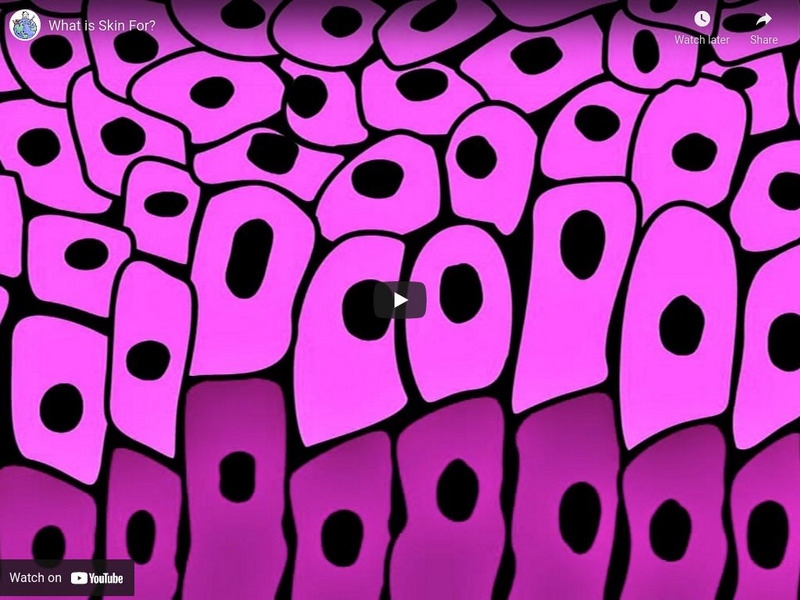Catalyst University
Anatomy | The Three Types of Skin Cancers
In this video, I explain and differentiate the three main types of skin cancers: basal cell carcinomas, squamous cell carcinomas, and malignant melanomas.
Professor Dave Explains
Stages of Animal Development: Cleavage, Gastrulation, Organogenesis
Before diving into animal diversity, we need a bit more information about animal development, as it will help us understand what we're looking at later. We know that animals reproduce sexually, so a sperm fertilizes an egg to yield a...
Catalyst University
A&P I Lab - Integration Lab 1 Histology of the Epidermis
A&P I Lab Integration Lab 1 Histology of the Epidermis
CTE Skills
HST-AP Integumentary System Pt. 3
So far in this CTE Skills Anatomy and Physiology series we've covered the main parts and the main functions of the integumentary system. In part 3 we will be going over the diseases of the skin. Acne, Skin Cancer, Athletes Foot,...
Catalyst University
Anatomy | First, Second, and Third Degree Burns
In this video, we will differentiate the three classes of skin burns: first, second, and third
Institute of Human Anatomy
Understanding First to Fourth Degree Burns
In this video, the presenter uses cadavers to explain the different types of burns and their effects on the body's tissues and structures. The video covers first to fourth-degree burns, their causes, and the treatments required for each....
Catalyst University
How do Melanocytes Make Melanin?: Melanogenesis Mechanism
In this video, we will discuss how melanocytes generate melanin and transfer this melanin to keratinocytes.
FuseSchool
Structure Of The Leaf
Plants make food through photosynthesis. Using their leaves, plants combine sunlight, carbon dioxide and water to make glucose and oxygen. A leaf is like a plant's food factory, collecting all of the components into one place so that...
Institute of Human Anatomy
Anatomy of Tattoos: Understanding How Tattoos Work on Human Skin
This video explores the anatomy of tattoos, specifically how ink is deposited into the skin and why tattoos are relatively permanent. The video covers the three layers of the skin and how the nature of each layer influences ink...
Ancient Lights Media
Structural Features of Plant Roots
This clip examines the main structure components of roots.
Visual Learning Systems
Plant Structure and Function: Leaves
Students will learn how the structures of plants such as roots, stems, and leaves enable them to live and grow. Real-life applications show how these plant structures are useful sources of food, building materials and medicine. Other...
Ancient Lights Media
Plants: The Internal Structure of Dicot Stems
Plants: The Internal Structure of Dicot Stems: This clip describes the roles of important internal structures present in the stems of Dicot plants.
Mazz Media
Integumentary System
In this live-action program viewers will learn that the integumentary system is the body's barrier between its interior and the outside. It is an organ system consisting of the skin, hair, nails, and exocrine glands. Students will come...
Nemours KidsHealth
How the Body Works—Skin
Take an elevator down under the surface of the skin! Animations show that new skin cells are formed and the old ones are shed in the epidermis, how melanin provides color and nerves and blood vessels reside in the dermis, and what the...
Sophia Learning
Sophia: Integumentary System Lecture
In this lecture video, students learn about the integumentary system and its components, and why skin is the largest organ in the human body. [62:58]
Science for Kids
Science Kids: Human Body Videos: Learn About Human Skin
Video explaining the three layers of human skin and the functions of each. (Length: 41 sec.)
Crash Course
Crash Course A&p #6 : The Integumentary System, Part 1 Skin Deep
Anatomy & Physiology continues with a look at the body's biggest organ - your skin. [9:39]
Minute Earth
Minute Earth: What Is Skin For?
In this video students will understand the concept of skin and its importance. In order to perform a protective barrier between you and the world each cell is programmed to systematically destroy itself as it nears the skin's surface....





